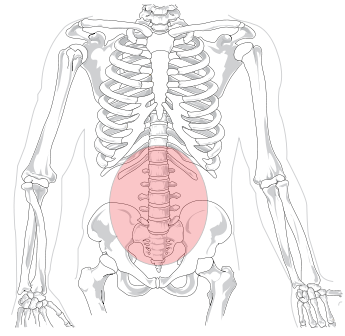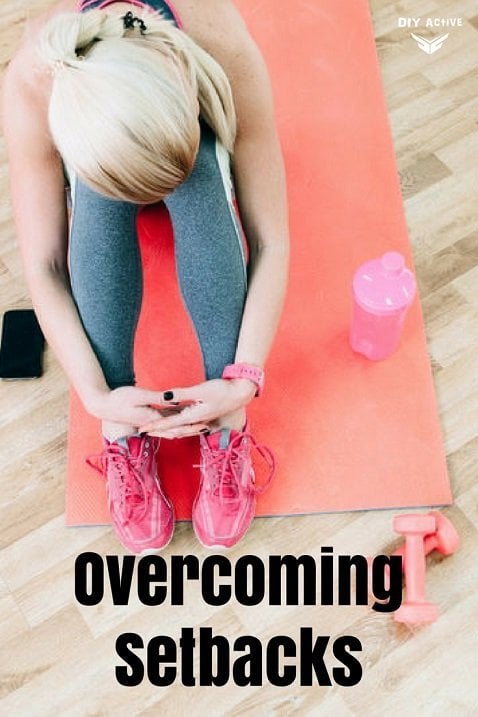
It’s Time to Get Back Up
They come in many forms; emotional, physical, or financial. Each is as devastating as the other. Setbacks can completely derail your health and fitness regime (not to mention your life, but that’s for more intelligent writers to discuss).
Trust me, I know. Up until last June, I was in the best shape of my life; I had a single-digit body fat percentage, I was lifting the most weight I’ve ever lifted, and I was feeling fantastic.
Let’s get past your setbacks
 Then it happened, I really can’t even remember how. There wasn’t a specific exercise where anything popped, I just started to get a burning sensation in my lower back and I started to lose torso flexibility; I had lower back pain.
Then it happened, I really can’t even remember how. There wasn’t a specific exercise where anything popped, I just started to get a burning sensation in my lower back and I started to lose torso flexibility; I had lower back pain.
This is one of the most common problems in America with 80% of adults experiencing low-back pain during their lives (Frymoyer and Cats-Baril 1991).
I just couldn’t fathom it would happen to me at 25-26 years old, I thought I was invincible.
Now it didn’t happen overnight, it started as just a minor inconvenience but slowly got progressively worse from June through September. I couldn’t get out of bed, my lower back hurt so badly. I could barely put on my shoes and on the worst days, my girlfriend had to help me out (bless her heart)!
I’m talking about pain so bad I gave up exercising for almost a month. I’ve never gone that long without working out that I can remember.
This lack of mobility was killing me and just sitting in the car or sleeping became uncomfortable. I was only getting four hours of sleep a night from constantly rolling around.
Since I couldn’t work out and was always in pain I started to lose self-confidence. It’s a depressing thing going from the best shape of your life to being barely able to tie your shoes.
Depressing is the wrong word, it was more of a humbling experience.
I knew from all the literature I had read that it had something to do with muscles or a disc pressuring my sciatic nerve; sciatica. The sciatic nerve is the largest nerve in the human body that runs from the lower back through the buttocks, down the leg. There was a constant pain shooting down my left leg and a deep burning in my left buttocks; a literal pain in the ass! Classic sciatic nerve complications.
I saw the traditional back specialist who prescribed some pills which numbed the pain, but in the long run, didn’t work.
I went to the chiropractor multiple times, didn’t work. I tried an inversion table, didn’t work. I tried acupuncture, didn’t work. I tried electronic muscle stimulation, didn’t work. I damn near gave up on the pain ever subsiding; a life resigned to a constant deep-burning, inconvenient pain!
When traditional medicine and everything else on God’s-green-Earth didn’t work, I started to look at my own physiology.
 I figured either A.) my muscles must be overcompensating because of a muscle imbalance [my hip flexors were tight, straining the opposing muscles]; B.) my hips were too tight leading to piriformis syndrome [I’ve always had really tight hip flexors and piriformis]; C.) a combination of these D.) a herniated disc [I wasn’t going to accept this as the cause].
I figured either A.) my muscles must be overcompensating because of a muscle imbalance [my hip flexors were tight, straining the opposing muscles]; B.) my hips were too tight leading to piriformis syndrome [I’ve always had really tight hip flexors and piriformis]; C.) a combination of these D.) a herniated disc [I wasn’t going to accept this as the cause].
I decided that I was going to conquer this by resting to heal (which I was already doing), stretching to fix muscle tightness, and spot lifting to target my muscle imbalances.
I talked to a personal trainer colleague at the gym and he set me up on a hip stretching routine (I’m learning as I go). I’ve done this routine every day for the past couple of months now (BB Stretching Guide)!
Not only did I start stretching daily, as I said earlier I gave up lifting for months. The pain started to subside (it was a Christmas miracle)!
Likewise, through my research, I come across this article that discussed how muscle imbalances can lead to lower back pain. I realized I need to focus my resistance training on my hip abductors, hamstrings, and lower back! I’ve been working on these muscles groups every week (message me if you want the exact workout).
Along with stretching, fixing my muscle imbalances by strength training has finally started to get me back to where I once was!
I’m happy to say that I’m almost 100% again. I have no trouble getting out of bed or putting on my shoes (good Lord, I sound old). It’s amazing how we can take something like our health for granted.
I’ve always heard that if you don’t have your health, you really don’t have anything, but I never really understood that; up until that point, I was invincible. Now I know how true those words really are!
I tell you my story because I want you to know I’ve been there and sometimes it seems like there is no light at the end of the tunnel, but there is! Don’t get down! Don’t get depressed! Don’t lose hope!
You can work your way back from any setback you encounter. It just takes an understanding of your own physiology, time, patience, perseverance, and desire! Let’s break it down.
1. Rest, Recoup, Rehabilitate
This was by far the hardest for me; taking time off from exercising to give your body time to heal!
At first, I tried to come back too fast and mildly re-injured myself. You need to take time off to make it back. During this time make sure to eat nutrient-dense meals and drink plenty of water to give your muscles the nutrients they need to heal! I will also note. that increasing your fish oil intake could have some positive effects.
This is because fish oils are anti-inflammatory; they could help decrease the inflammation around the joint and therefore healing can progress faster.
2. Seriously Start Stretching
Make static stretching and warming up THE priority in your workout regime, more of a priority than the actual workout. Perform static stretching (low-intensity, long-duration) for 5-10 minutes (AFAA PFT Theory and Practice 2010).
This form of stretching allows the muscle fibers to slowly relax during the duration of the stretch, making this the safest form of stretching. This allows you to improve your flexibility and, if you were like me, it can help relieve pain! For the injured area, stretch that muscle group for 15-30 seconds for each different stretch you do. Here are some great stretches for the piriformis in the video below (tons more can be found on YouTube).
3. Slow, Steady Start
When you do comeback, you need to start slowly.
When you make it back, no matter where you are injured, start lifting really light. Avoid joint movements that cause any pain. For instance, with my injury, it hurt to do squats so I had to avoid them. Or if you have knee pain, perform the majority of your upper body workouts sitting down.
Likewise, if you have a joint-specific injury it might be better to do isometric exercises to strengthen that joint until it’s strong enough to support the full weight (AFAA PFT Theory and Practice 2010). Isometric exercises are those where the joint angle doesn’t change like wall-sits depicted below.
 One area that may be hampering you is muscle imbalance. For me, my hip flexors and quads were tight, pulling my upper body forward and down.
One area that may be hampering you is muscle imbalance. For me, my hip flexors and quads were tight, pulling my upper body forward and down.
This put pressure on the piriformis, hamstrings, glutes, and lower back. To correct this, I specifically targeted my lower back, glutes, and hamstrings while stretching the hips (as mentioned above).
If you can figure out which muscle group is your problem area (stretch that area) you can figure out which is the opposing muscle group to strengthen. If you are having trouble figuring this out, message me and we can try to work it out together.
This all takes research to understand what is really bothering you. If you are experiencing low-back pain you may be experiencing what I did (or it could actually be a disc issue).
For all other injuries, if you aren’t working with a physical therapist, work slow, be careful, and you more than likely need to consult your doctor if the pain doesn’t subside.
Wrap-Up
If you’ve ever experienced any physical setback you know how terribly debilitating and depressing it can be. Whether you are recovering from surgery, a sprained joint, or lower back pain you can overcome, it just takes time.
If you aren’t seeing a therapist, take your time to heal (eat proper nutrition and drink plenty of water), stretch, and spot train to fix muscle imbalances.
By doing a little research you can figure out your problem/weak areas which will tell you what to stretch and what to spot train.
If you don’t have your health, then you really don’t have anything!
More Information:
Stretches for Sciatica Pain from Piriformis Syndrome
BodyBuilding.com Stretching Guide
Disclaimer: If you are injured see a physician.
References
AFAA Personal Fitness Trainer: Theory and Practice; Second Edition (2010) Yoke M. ed. Gladwin LA. California.
Frymoyer JW, Cats-Baril WL (1991) An overview of the incidence and costs of low back pain. Orthopedic Clinics of North America 22:263.
Photos via:
www.commons.wikimedia.org
Hannah Marie Photography
- Post-Workout Meal: Getting the Most from Your Workout - January 22, 2024
- 6 Ab Exercises To Blast Your Core - December 17, 2023
- 10 Office Exercises You Can Do To Burn Calories - November 19, 2023



